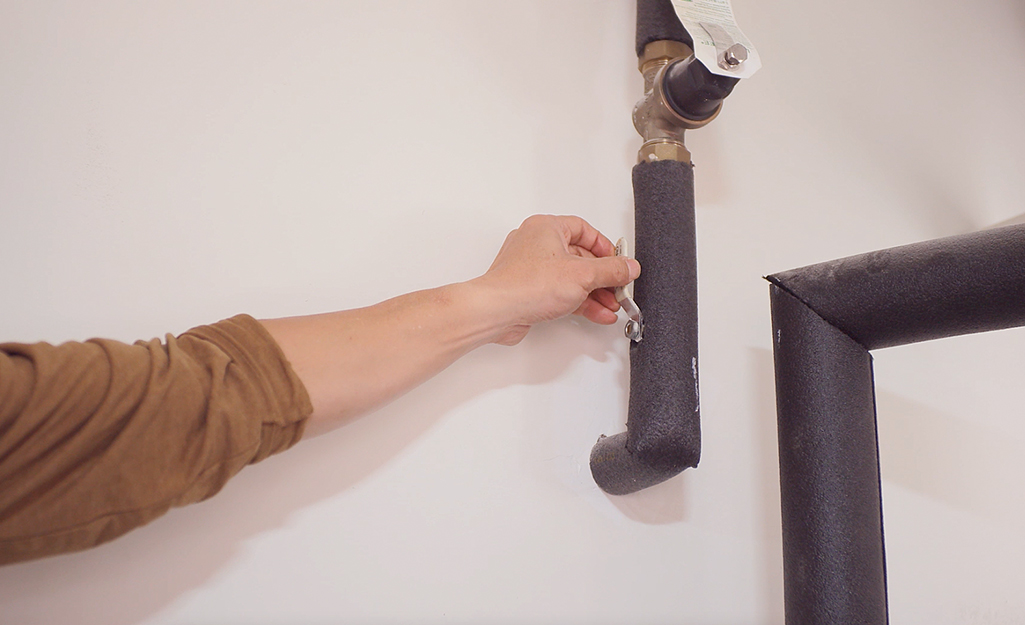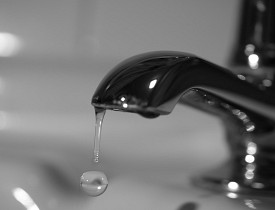They are making a number of good pointers regarding Why It's Important to Fix Leaky Faucets as a whole in this article down below.

Leaking faucets might look like a minor inconvenience, but their influence exceeds just the inconvenience of the noise. From drainage to incurring unnecessary economic expenses and health threats, ignoring a dripping faucet can bring about various effects. In this write-up, we'll look into why it's important to address this common house problem without delay and efficiently.
Wastefulness of Water
Ecological Effect
Dripping faucets contribute dramatically to water waste. According to the Environmental Protection Agency (EPA), a single tap trickling at one drip per secondly can squander more than 3,000 gallons of water annually. This not only strains water sources however additionally impacts ecosystems and wildlife depending on them.
Step-by-Step Guide to Fixing a Dripping Faucet
Devices Needed
Before trying to take care of a trickling tap, gather the necessary tools, including a flexible wrench, screwdrivers, substitute parts (such as washers or cartridges), and plumber's tape.
Typical Faucet Issues and Their Solutions
Identify the type of faucet and the specific issue creating the drip. Usual problems include worn-out washing machines, corroded shutoff seats, or faulty O-rings. Refer to manufacturer guidelines or on the internet tutorials for step-by-step advice on repair services.
Financial Prices
Increased Water Costs
Beyond the ecological impact, leaking taps can inflate water costs substantially. The collected wastage with time equates into higher energy expenditures, which could have been stayed clear of with prompt repair work.
Possible Home Damages
Moreover, long term dripping can result in damage to fixtures and surfaces bordering the tap. Water build-up can create discoloration, corrosion, and even architectural issues if left unattended, causing extra repair work prices.
Health and wellness Problems
Mold and Mold Development
The constant presence of moisture from a trickling tap creates a suitable setting for mold and mildew growth. These fungi not only jeopardize indoor air high quality but also position health and wellness threats, particularly for individuals with breathing problems or allergic reactions.
Waterborne Conditions
Stationary water in trickling taps can become a breeding ground for bacteria and other pathogens, enhancing the danger of waterborne illness. Pollutants such as Legionella germs flourish in stagnant water, potentially causing severe health problems when consumed or breathed in.
Do it yourself vs. Expert Repair service
Benefits and drawbacks of Do It Yourself Repair Service
While some might attempt to repair a leaking faucet themselves, DIY repairs come with their very own set of difficulties. Without proper knowledge and devices, do it yourself efforts can intensify the concern or lead to incomplete repair work, prolonging the issue.
Advantages of Working With a Professional Plumber
Working with a specialist plumber ensures that the underlying root cause of the trickling faucet is addressed successfully. Plumbing technicians have the knowledge and tools to diagnose and fix faucet concerns effectively, conserving time and lessening the threat of more damages.
Environmental Obligation
Private Contribution to Conservation
Taking duty for dealing with trickling faucets lines up with broader efforts towards water conservation and ecological sustainability. Every person's actions jointly make a considerable effect on preserving priceless resources.
Lasting Living Practices
By focusing on prompt fixings and embracing water-saving behaviors, people contribute to lasting living practices that profit both existing and future generations.
Preventive Measures
Regular Maintenance Tips
To prevent leaking faucets, perform routine upkeep such as cleaning up aerators, evaluating for leakages, and changing worn-out parts without delay. Additionally, consider mounting water-saving tools or updating to more reliable fixtures.
Value of Prompt Repair Works
Addressing trickling faucets as quickly as they're seen stops additional water wastage and potential damages, ultimately conserving both water and money in the future.
Influence On Property Worth
Assumption of Well-Maintained Home
Keeping a building in good condition, consisting of addressing upkeep issues like dripping taps, boosts its viewed value and value among prospective customers or tenants.
Influence on Resale Value
Characteristics with well-maintained plumbing components, including faucets, command higher resale worths in the realty market. Resolving trickling taps can contribute to a favorable impression during building evaluations and settlements.
Verdict
Dealing with a dripping faucet exceeds mere comfort; it's a vital action toward saving water, reducing financial costs, and securing health and building. Whether with DIY repair work or professional assistance, taking action to fix dripping faucets is a tiny yet impactful way to promote accountable stewardship of resources and add to a healthier, extra sustainable future.
How to Fix a Dripping or Leaky Faucet
A leaking faucet is one of the most common problems that homeowners encounter, but it being commonplace doesn’t make it any less annoying. The constant drip drip drip of a leaking bathtub faucet, showerhead, or sink tap can disturb your home’s serenity. Left neglected, a dripping faucet can also result in higher water bills and discoloration or mold growth in your sink or plumbing fixtures.
Fortunately, you don’t have to be a trained plumber to know how to stop a dripping faucet. With some basic tools, replacement parts, and a little patience, leaky faucet repair is a breeze. In this article, we’ll explain what causes dripping faucets and how you can fix them.
What Causes a Leaking Faucet?
Kitchen and bathroom faucets come in all manner of designs, but most involve some combination of valves, O-rings, seals, and washers. The O-ring is usually the weakest link, but any one of these pieces can wear down over time. Heat, moisture, temperature fluctuations, minerals, mold, and movement can contribute to warping and corrosion, breaking the watertight seal. This just comes with the territory of being a homeowner. Everything is always subject to wear and tear, and some component parts of your appliances and fixtures need to be replaced on occasion. At least replacement O-rings are cheap!
More rarely, dripping faucets can be a symptom of excessively high water pressure. Were this the case in your home, you would probably notice that the leak is not isolated to one faucet. Water pressure issues are harder to resolve on your own. We recommend contacting a professional plumber if you suspect your water pressure is too high.
How to Fix a Dripping Faucet
Pipe wrench or monkey wrench Allen wrench set Screwdrivers Old towel or rag Shut off the water.
Before you do anything, you need to turn off the water to keep from drenching your kitchen or bathroom. You should find a valve under the sink and against the wall. Once you’ve turned this valve, try turning the faucet on to confirm that the water source has been cut off.
If you can’t locate your local valve for the faucet you’re working on, you can always shut off the water to the house at the main valve. Of course, this will prohibit anyone from using the sinks, showers, or toilets while you’re working on the faucet that’s giving you trouble.
Plug or block the drain.
You’ll be disassembling the faucet and removing some small bits of hardware. Plug the drain with a stopper or rag to avoid the possibility of a small screw falling into your P-trap.
Take apart the faucet assembly.
There are several varieties of kitchen and bathroom faucets, each with its own manner of assembly. For detailed instructions on how to disassemble your faucet, you can refer to the fixture’s manual or contact the manufacturer. If you know whether you have a ball, disc, cartridge, or compression faucet, you can find detailed schematics online.
In general, you need to begin by removing the faucet handles. You might notice a small screw that you’ll need to remove with a screwdriver or Allen wrench. If you don’t see any visible securing hardware, it’s likely hidden under a decorative cap that can be unscrewed or popped off with flathead screwdriver.
Remove each piece methodically, consulting a schematic when necessary. Take notes or arrange the pieces in such a way to make it easier to correctly reassemble the faucet later.
Remove the cartridge.
Once you’ve removed the handles and securing hardware, you should be able to remove the valve cartridge or stem. Some cartridges will slide right out. Other faucet models will require you to loosen a nut with a pipe wrench before you can remove the valve stem.
Examine the exposed hardware.
With the cartridge or stem removed, inspect the component parts. Check the rubber O-rings for wear and tear. Also examine the seat washer for corrosion or other damage. These pieces are usually the responsible parties for a dripping faucet, but it’s worth inspecting the other component parts while you have the faucet disassembled.
Find replacement parts.
Once you’ve identified which faucet component has failed, find an identical replacement. Your local hardware store should have O-rings, seat washers, and other standard components in stock. If you have a luxury or uncommon faucet, you may have to contact the manufacturer for a replacement part.
It’s a good idea to take your old parts with you to the hardware store so you can compare them with the store’s inventory and be sure you’re purchasing the correct replacement.
Reassemble the faucet.
With your new parts in hand, reconstruct the faucet and handles. Don’t be tempted to overtighten screws or nuts. You might think this could create a better seal, but it can instead damage or bend a delicate part of the assembly and create a new problem for you.
Turn on the water and test the faucet.
The only thing left to do is test your work. Unplug the sink, turn the water back on, and try the faucet. Congratulate yourself on a job well done!
https://www.libertyhomeguard.com/how-to-fix-a-dripping-or-leaky-faucet/

We hope you liked our part on Why Is It Important To Fix Your Leaking Tap/Faucet?. Many thanks for finding the time to read our piece. Enjoyed reading our posting? Please quickly share it. Help someone else discover it. Thank you for being here. Please visit our blog back soon.